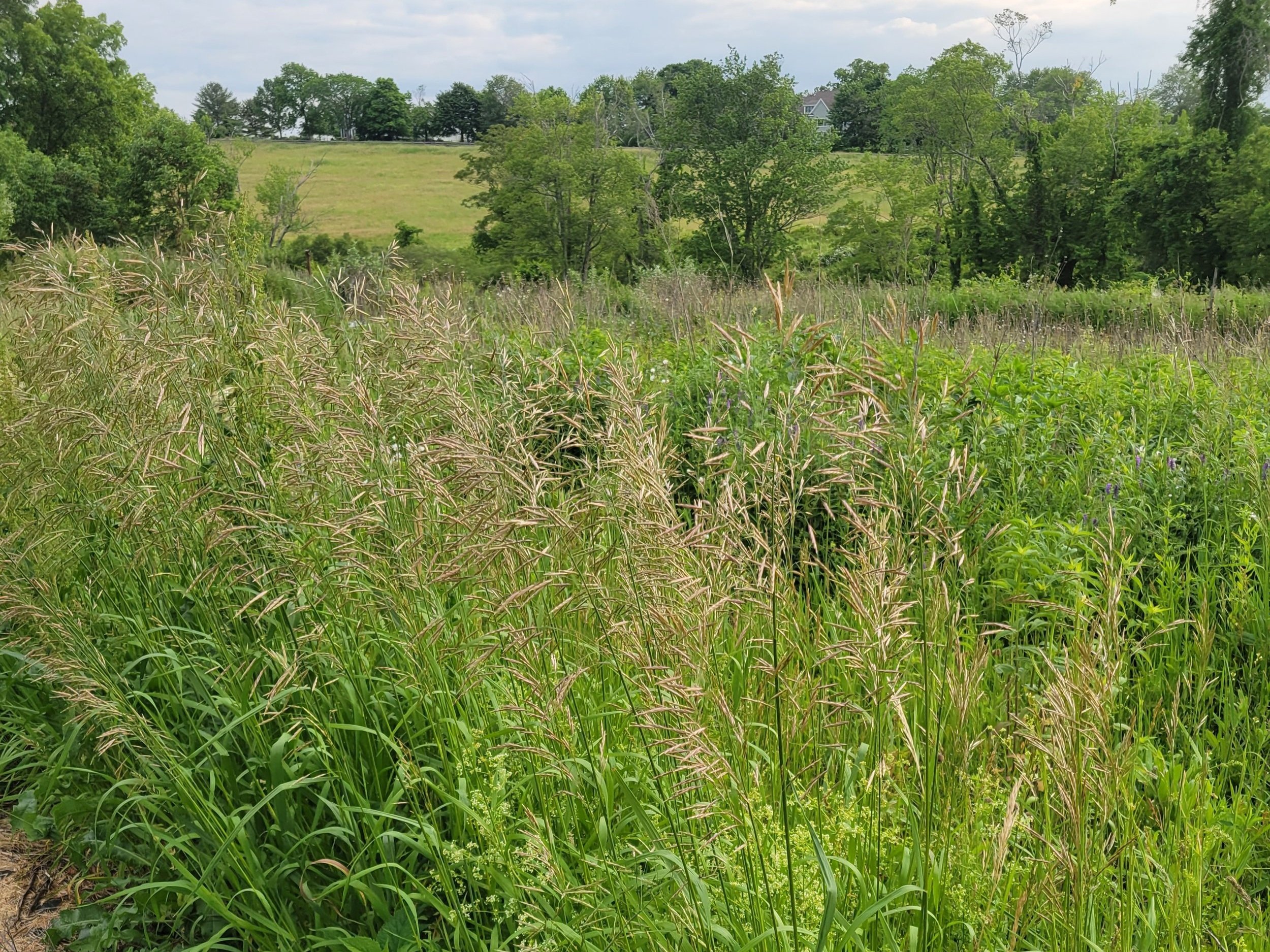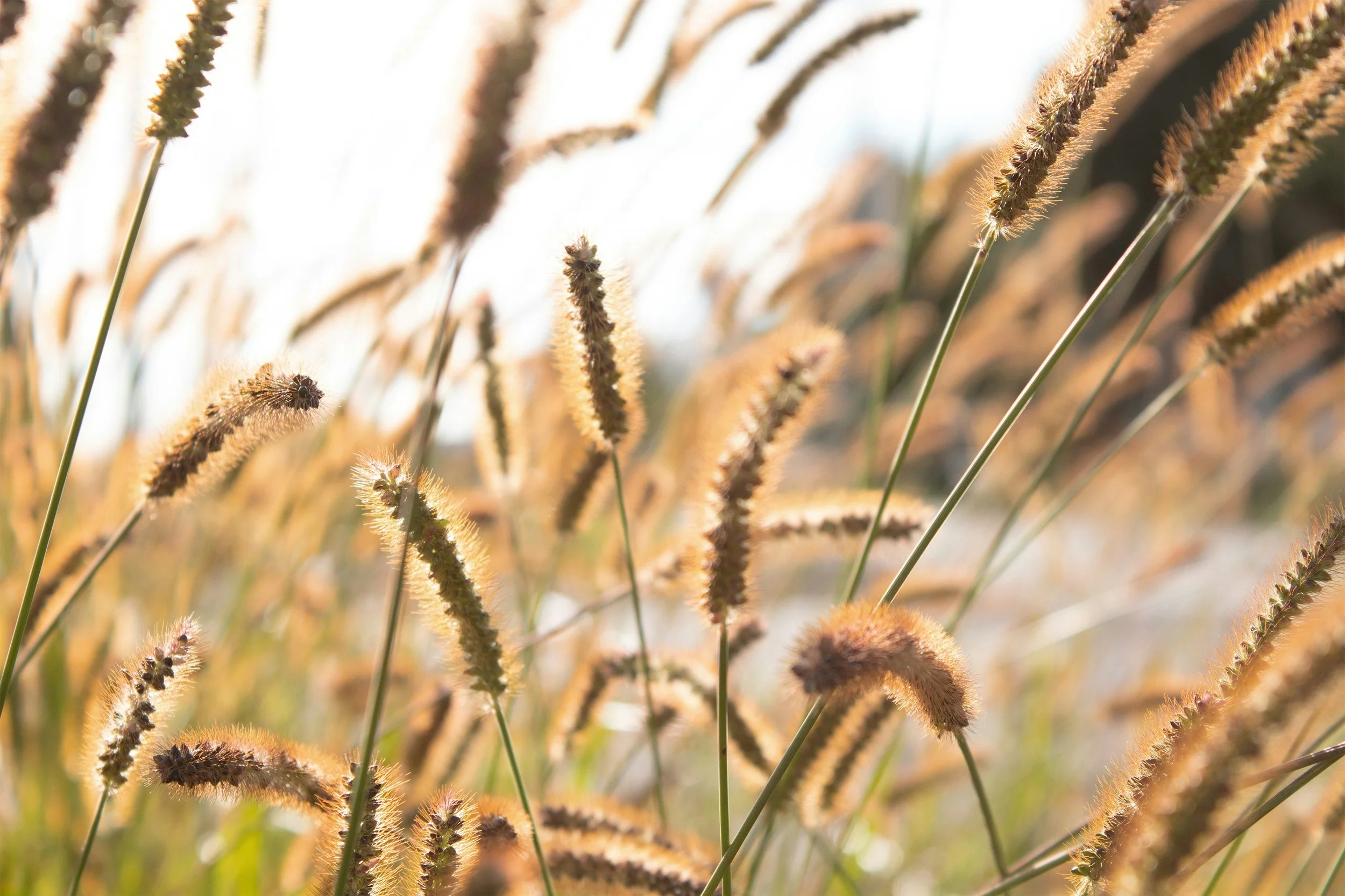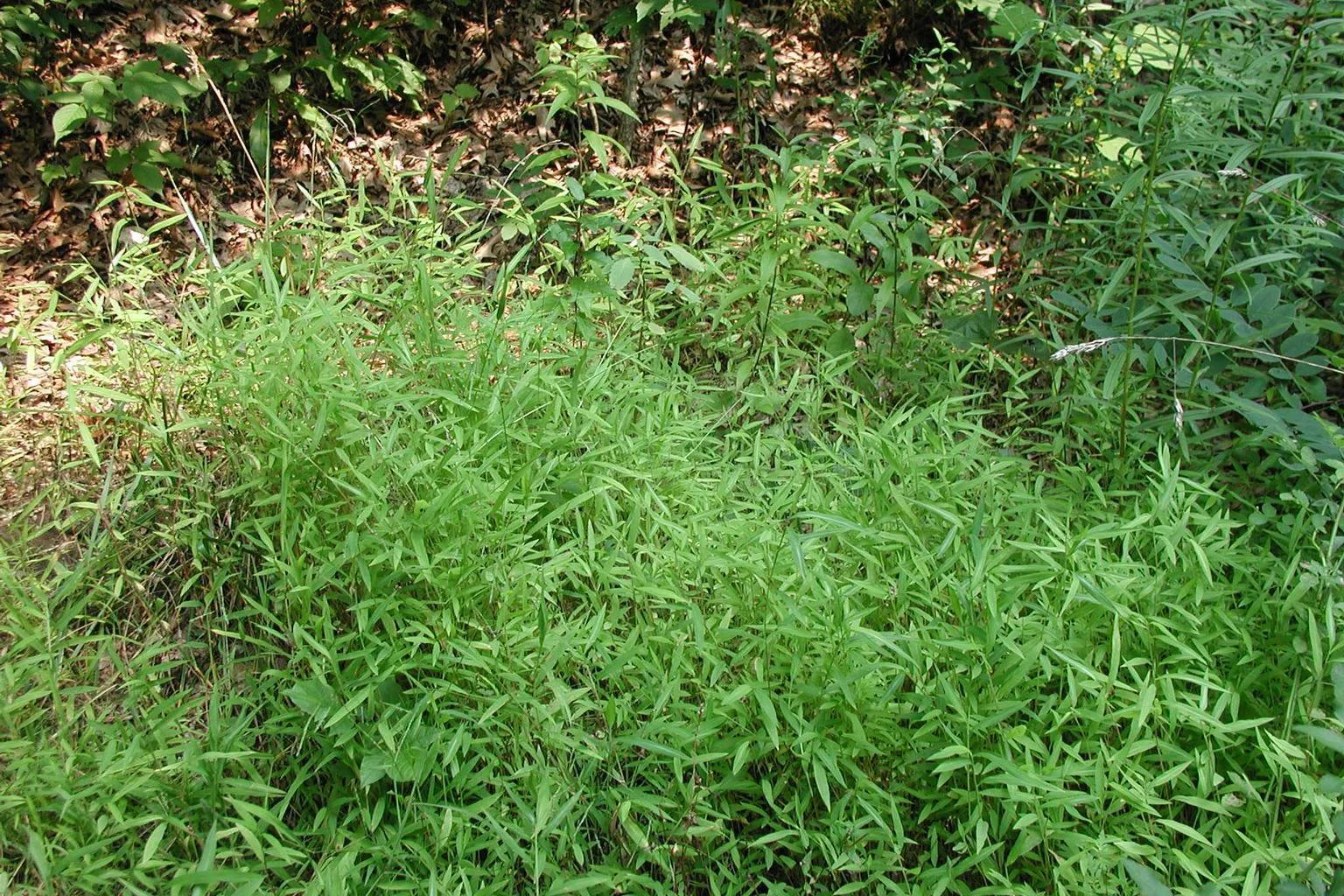MANAGE YOUR LANDSCAPE
Management Overview Managing Weeds & Invasives Mowing Meadows
Managing Weeds and Invasives
All gardens have some weeds, which don’t necessarily detract from the garden’s value to pollinators. Weeds are a problem when they threaten to overwhelm your planted native species. Get in the habit of regularly observing your plantings, so that you can identify new arrivals, monitor weeds, and decide what kind of management they warrant.
Editor’s Picks for Weed ID: Apps like Seek and PictureThis can help identify weeds and invasives along with native plants. Great printed field guides include Weeds of the Northeast and Invasive Plants: Guide to Identification and the Impacts and Control of Common North American Species.
Annual weeds such as foxtails (Setaria species), lamb’s quarters (Chenopodium species) and ragweed (Ambrosia species) often appear in newly planted Hudson Valley gardens and meadows. In meadows, they can look overwhelming at first, but if mowed before they set seed, they will disappear after a year or two. In gardens, these plants can be hand-pulled anytime before they set seed, or better still, cut at the base to avoid disturbing the soil and bringing more weed seeds to the surface.
Common perennial weeds in the Hudson Valley include dandelions (Taraxacum officinale), Queen Anne’s lace (Daucus carota), and pasture grasses. In meadows, some of these will usually occur in moderate populations and can coexist without harming the seeded plants. The best management strategy here is prevention - ensuring that you have a clean seedbed with no existing vegetation before planting. First-year frequent mowing also helps set back the growth of these weeds enough that the native seeded plants can compete. In gardens, manual removal (digging) or targeted herbicide treatment can also be used to remove perennial weeds.
Invasive weeds are a special class of non-native (introduced) plant with a heightened ability to spread and outcompete existing native vegetation, damaging ecological communities. Common Hudson Valley invasives include mugwort, Japanese knotweed, bittersweet, barberry, multiflora rose, autumn-olive, tree-of-heaven, Japanese stiltgrass, garlic mustard and more.
Common Hudson Valley Weeds
Multiflora rose (Rosa multiflora) - a perennial invasive shrub common in unmowed fields and in woods
Oriental bittersweet (Celastrus orbiculatus) - a pervasive, invasive vine spread by birds, who consume the bright red berries
Wild carrot (Daucus carota) - a biennial carrot relative, not considered invasive but common in open fields and meadows
Smooth bromegrass (Bromus inermis) - a non-native, European grass common in pastures and hayfields, difficult to eradicate from meadows
Yellow foxtail (Setaria pumila) - a common annual weed that often appears after disturbance but doesn’t persist beyond 1-2 years
If invasive plants are present in or around your planting, it’s crucial to identify them quickly and take special care to stop their spread within your site and beyond your property’s borders. For small sites, they may be managed by hand with perseverance; for larger sites or established stands, you can talk to a professional landscaper to discuss removal options. To manage invasive pressure in meadows, it’s helpful to maintain a closely-mowed strip or buffer (the width of your mower, usually 3-8’) around the meadow edge. This helps prevent nearby weeds from encroaching.
Japanese stiltgrass (Microstegium vimineum) - an invasive grass often found in woods and fields, especially in moist soils
To learn more about invasive species in the Hudson Valley, you can visit your local Partnership for Regional Invasive Species Management (PRISM), overseen by Cornell Cooperative Extension - see Capital Region PRISM and Lower Hudson PRISM. Another Cornell University program, the New York Invasive Species Research Institute (NYISRI), is an excellent source for the latest research, webinars, and conferences about invasive species.
(Photo, Left)This seeded pollinator meadow, now in its third year of growth, has been overwhelmed by invasive species like mugwort (Artemisia vulgaris) and smooth bromegrass (Bromus inermis). The seeded plants are unable to compete and have quickly died out. Proper maintenance and early detection of weed problems can prevent your meadow from inundation by weeds and invasives.







